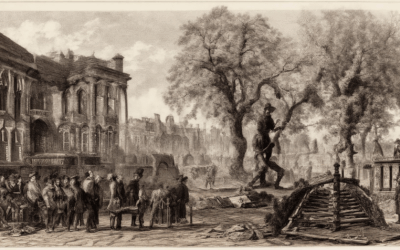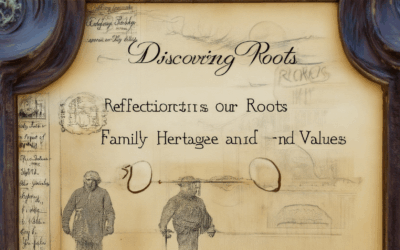Cultural heritage journeys offer a unique window into the rich tapestry of human history, allowing travelers to connect with the past in profound ways. These journeys transcend mere exploration; they serve as gateways to understanding diverse cultures, histories, and traditions. Whether through the awe-inspiring ruins of ancient civilizations, the vibrant festivals celebrating living heritage, or the meticulous preservation of UNESCO World Heritage sites, cultural heritage journeys provide an educational and transformative experience. In this article, we embark on a journey to explore the multifaceted nature of cultural heritage, delving into its definitions, examples, and the various forms it takes. From iconic landmarks to lesser-known treasures, we uncover the significance of cultural heritage in shaping identities and fostering global connectivity. Join us as we unravel the complexities of cultural heritage journeys, discovering how they not only preserve our past but also enrich our present and future.
Key Takeaways
– Preserving History: Explore how cultural heritage landscapes protect and celebrate humanity’s shared past, offering insights into history, art, and societal evolution.
– Four Types of Landscapes: Discover the four distinct categories of cultural landscapes—historic designed, vernacular, sites, and ethnographic—each providing unique windows into human history.
– Tangible & Intangible Heritage: Learn about the tangible elements like monuments and artifacts, and the intangible aspects such as traditions, languages, and culinary practices that define cultural identity.
– Global Connections: Understand the global significance of landmarks like the Great Pyramid of Giza and the Alhambra, highlighting their universal cultural value.

Cultural Journeys
A cultural journey is an immersive travel experience designed to allow individuals to explore diverse cultures, traditions, and histories. These journeys often emphasize meaningful interactions with local communities, authentic experiences, and the opportunity to gain a deeper understanding of the world’s rich tapestry of cultures.
What Are Cultural Journeys?
Cultural journeys are organized tours or travels aimed at fostering connections with different cultures. They typically involve visiting destinations that showcase unique customs, art, food, and history. These trips are often planned to create opportunities for reflection, learning, and personal growth.
Why Take a Cultural Journey?
- Engage with Local Communities : Cultural journeys often include interactive activities such as homestays, workshops, and festivals, allowing travelers to immerse themselves in local cultures.
- Discover Hidden Gems : These trips often take visitors off the beaten path to explore lesser-known sights and experiences that offer a more authentic view of a culture.
- Build Cross-Cultural Understanding : By interacting with people from various backgrounds, participants develop empathy and appreciation for different ways of life.
Types of Cultural Journeys
- Historical and Archaeological Tours : Designed for history enthusiasts, these journeys visit ancient ruins, historical sites, and museums to explore the roots of civilizations.
- Art and Music Festivals : Immersive experiences that allow participants to engage with local artists, musicians, and performers, offering a unique insight into a culture’s creative expression.
- Food and Wine Trails : Culinary-focused journeys that showcase regional cuisines, wine-tasting experiences, and traditional cooking techniques.
Benefits of Cultural Journeys
- Educational Opportunities : Learn about the history, traditions, and daily lives of the people you encounter.
- Personal Growth : Gain a broader perspective on life and cultural diversity.
- Unique Stories and Memories : These journeys often provide stories and memories that stay with you long after the trip ends.
Planning a Cultural Journey
- Research Destinations : Choose locations that align with your interests, whether it’s historical exploration, artistic immersion, or culinary adventures.
- Join a Reputable Tour Company : Companies specializing in cultural travel can help arrange logistics and provide insider access to local experiences.
- Pack Appropriately : Dress modestly and respect local customs to ensure a positive and respectful experience.
Competitors in the Market
While there are many excellent tour companies offering cultural journeys, some notable names include:- G Adventures : Known for their innovative and interactive tours, G Adventures offers a variety of cultural exploration options.- Intrepid Travel : Specializes in small-group tours that emphasize authenticity and local interaction.- World Expeditions : Offers a mix of adventure and cultural immersion, making them a great choice for those seeking a combination of activities.
These companies provide well-organized trips that cater to different interests, ensuring that travelers can find a cultural journey that suits their preferences.
Conclusion
Embarking on a cultural journey is a transformative experience that opens your eyes to the richness of human culture. Whether you’re interested in history, art, food, or community engagement, there’s a journey tailored to your interests. old-day encourages you to explore the world’s cultures through thoughtful and immersive experiences, allowing you to connect with others in meaningful ways.
“`html
Cultural Journeys
A cultural journey is an immersive travel experience designed to allow individuals to explore diverse cultures, traditions, and histories. These journeys often emphasized meaningful interactions with local communities, authentic experiences, and the opportunity to gain a deeper understanding of the world’s rich tapestry of cultures.
What Are Cultural Journeys?
Cultural journeys are organized tours or travels aimed at fostering connections with different cultures. They typically involved visiting destinations that showcase unique customs, art, food, and history. These trips are often planned to create opportunities for reflection, learning, and personal growth.
Why Take a Cultural Journey?
- Engage with Local Communities : Cultural journeys often include interactive activities such as homestays, workshops, and festivals, allowing travelers to immerse themselves in local cultures.
- Discover Hidden Gems : These trips often took visitors off the beaten path to explore lesser-known sights and experiences that offered a more authentic view of a culture.
- Build Cross-Cultural Understanding : By interacting with people from various backgrounds, participants developed empathy and appreciation for different ways of life.
Types of Cultural Journeys
- Historical and Archaeological Tours : Designed for history enthusiasts, these journeys visited ancient ruins, historical sites, and museums to explore the roots of civilizations.
- Art and Music Festivals : Immersive experiences that allowed participants to engage with local artists, musicians, and performers, offering a unique insight into a culture’s creative expression.
- Food and Wine Trails : Culinary-focused journeys that showcased regional cuisines, wine-tasting experiences, and traditional cooking techniques.
Benefits of Cultural Journeys
- Educational Opportunities : Learned about the history, traditions, and daily lives of the people you encountered.
- Personal Growth : Gained a broader perspective on life and cultural diversity.
- Unique Stories and Memories : These journeys often provided stories and memories that stayed with you long after the trip ended.
Planning a Cultural Journey
- Research Destinations : Chose locations that aligned with your interests, whether it was historical exploration, artistic immersion, or culinary adventures.
- Join a Reputable Tour Company : Companies specializing in cultural travel could help arrange logistics and provide insider access to local experiences.
- Pack Appropriately : Dressed modestly and respected local customs to ensure a positive and respectful experience.
Competitors in the Market
While there were many excellent tour companies offering cultural journeys, some notable names included:- G Adventures : Known for their innovative and interactive tours, G Adventures offered a variety of cultural exploration options.- Intrepid Travel : Specialized in small-group tours that emphasized authenticity and local interaction.- World Expeditions : Offers a mix of adventure and cultural immersion, making them a great choice for those seeking a combination of activities.
These companies provided well-organized trips that catered to different interests, ensuring that travelers could find a cultural journey that suited their preferences.
Conclusion
Embarking on a cultural journey was a transformative experience that opened your eyes to the richness of human culture. Whether you were interested in history, art, food, or community engagement, there was a journey tailored to your interests. old-day encouraged you to explore the world’s cultures through thoughtful and immersive experiences, allowing you to connect with others in meaningful ways.
“`html
Cultural Journeys
A cultural journey is an immersive travel experience designed to allow individuals to explore diverse cultures, traditions, and histories. These journeys often emphasized meaningful interactions with local communities, authentic experiences, and the opportunity to gain a deeper understanding of the world’s rich tapestry of cultures.
What Are Cultural Journeys?
Cultural journeys are organized tours or travels aimed at fostering connections with different cultures. They typically involved visiting destinations that showcase unique customs, art, food, and history. These trips are often planned to create opportunities for reflection, learning, and personal growth.
Why Take a Cultural Journey?
- Engage with Local Communities : Cultural journeys often include interactive activities such as homestays, workshops, and festivals, allowing travelers to immerse themselves in local cultures.
- Discover Hidden Gems : These trips often took visitors off the beaten path to explore lesser-known sights and experiences that offered a more authentic view of a culture.
- Build Cross-Cultural Understanding : By interacting with people from various backgrounds, participants developed empathy and appreciation for different ways of life.
Types of Cultural Journeys
- Historical and Archaeological Tours : Designed for history enthusiasts, these journeys visited ancient ruins, historical sites, and museums to explore the roots of civilizations.
- Art and Music Festivals : Immersive experiences that allowed participants to engage with local artists, musicians, and performers, offering a unique insight into a culture’s creative expression.
- Food and Wine Trails : Culinary-focused journeys that showcased regional cuisines, wine-tasting experiences, and traditional cooking techniques.
Benefits of Cultural Journeys
- Educational Opportunities : Learned about the history, traditions, and daily lives of the people you encountered.
- Personal Growth : Gained a broader perspective on life and cultural diversity.
- Unique Stories and Memories : These journeys often provided stories and memories that stayed with you long after the trip ended.
Planning a Cultural Journey
- Research Destinations : Chose locations that aligned with your interests, whether it was historical exploration, artistic immersion, or culinary adventures.
- Join a Reputable Tour Company : Companies specializing in cultural travel could help arrange logistics and provide insider access to local experiences.
- Pack Appropriately : Dressed modestly and respected local customs to ensure a positive and respectful experience.
Competitors in the Market
While there were many excellent tour companies offering cultural journeys, some notable names included:- G Adventures : Known for their innovative and interactive tours, G Adventures offered a variety of cultural exploration options.- Intrepid Travel : Specialized in small-group tours that emphasized authenticity and local interaction.- World Expeditions : Offers a mix of adventure and cultural immersion, making them a great choice for those seeking a combination of activities.
These companies provided well-organized trips that catered to different interests, ensuring that travelers could find a cultural journey that suited their preferences.
Conclusion
Embarking on a cultural journey was a transformative experience that opened your eyes to the richness of human culture. Whether you were interested in history, art, food, or community engagement, there was a journey tailored to your interests. old-day encouraged you to explore the world’s cultures through thoughtful and immersive experiences, allowing you to connect with others in meaningful ways.
Cultural Heritage Examples
Cultural heritage encompasses a wide range of tangible and intangible assets that reflect the history, traditions, and values of a particular group or society. Here are some notable examples:
- Tangible Cultural Heritage:
- Architectural examples: The Great Wall of China, ancient Roman aqueducts, and medieval castles.
- Artistic examples: Paintings by artists like da Vinci, sculptures by Michelangelo, and traditional pottery from various cultures.
- Written examples: Manuscripts such as the Dead Sea Scrolls, ancient texts like the Iliad, and literary works by Shakespeare.
- Material objects: Tools, weapons, clothing, and household items from historical periods.
- Intangible Cultural Heritage:
- Traditional practices: Festivals such as Mardi Gras, Carnival, and the Kumbha Mela festival in India.
- Performing arts: Music, dance, and theater traditions from around the world, including flamenco, classical Indian dance, and Japanese kabuki.
- Linguistic heritage: Endangered languages like Hawaiian, Maori, and Navajo, preserving unique dialects and linguistic expressions.
- Rituals and ceremonies: Religious rituals, traditional weddings, and communal celebrations that have been passed down through generations.

What is a Heritage Journey?
A heritage journey is an immersive exploration of cultural roots, historical contexts, and ancestral connections. It involves traveling to meaningful locations, both locally and globally, to uncover the stories, traditions, and histories that shape individual and collective identities. Whether tracing family lineage or discovering cultural landmarks, a heritage journey offers a profound sense of belonging and understanding of one’s place in the world.
Key Components of a Heritage Journey
- Cultural Exploration
- Visit museums, historical sites, and cultural landmarks that hold significance to your ancestry or local heritage.
- Engage with local traditions, festivals, and customs to experience authentic cultural practices firsthand.
- Ancestral Connection
- Research and visit places associated with your family history, such as birthplaces, homelands, or family-owned properties.
- Connect with living descendants or communities who share your cultural background, fostering a deeper emotional bond.
- Storytelling and Reflection
- Listen to stories passed down through generations, preserving oral histories and cultural wisdom.
- Reflect on how these experiences shape your identity and contribute to a broader understanding of your heritage.
- Discovery and Learning
- Explore historical archives, libraries, and archeological sites to uncover forgotten or lesser-known aspects of your ancestry.
- Participate in educational programs, workshops, or guided tours led by experts in history and archaeology.
- Celebration and Preservation
- Attend cultural celebrations, festivals, and rituals that celebrate your heritage.
- Contribute to the preservation of cultural artifacts, traditions, and heritage sites by supporting local initiatives or organizations.
Planning Your Heritage Journey
- Research and Preparation : Start by gathering information about your ancestry, significant historical figures, and cultural landmarks. Create an itinerary that includes visits to relevant sites and events.
- Travel Logistics : Choose the best time to travel, considering seasonal changes and cultural event timings. Plan accommodation in culturally rich areas to enhance your experience.
- Engagement and Interaction : Be open to interactions with locals, participate in community activities, and immerse yourself in daily life to gain a deeper understanding of the culture.
By embarking on a heritage journey, you not only explore the past but also enrich your present and future. It’s a transformative experience that connects you with your roots while contributing to the preservation of cultural heritage for generations to come.

Cultural Heritage Landscape Example
A cultural heritage landscape refers to a physical area that holds significant historical, archaeological, architectural, or cultural value. These landscapes often tell the story of a place and its people, serving as tangible connections to the past. One notable example is the ancient ruins of the Great Pyramid of Giza in Egypt, which dates back to around 2600 BCE. Another example is the historic center of Williamsburg, Virginia, USA, which has been preserved to reflect its colonial-era origins.
Here are some examples of cultural heritage landscapes:
- Monuments and Architectural Sites : Structures like the Pyramids of Giza, the Colosseum in Rome, or the Taj Mahal in India are prime examples. These sites are often listed as UNESCO World Heritage Sites due to their global cultural significance.
- Gardens and Parks : Public gardens and urban parks, such as Central Park in New York City or the Royal Botanic Gardens in Melbourne, Australia, are cultural heritage landscapes because they represent the aesthetic and environmental values of their cities.
- Historical Neighborhoods : Areas like the Old Town of Kraków, Poland, or the Alhambra in Granada, Spain, are living cultural heritage landscapes that preserve the traditions, architecture, and history of their communities.
- Industrial and Archaeological Sites : Places like the blast furnace complexes in Bethlehem, Pennsylvania, USA, or the ancient Roman bathhouses in Pompeii, Italy, offer insights into industrial and daily life from different eras.
These landscapes are vital for preserving our shared history and fostering a sense of identity and connection to the past. By protecting and celebrating these areas, we ensure that future generations can appreciate the richness of human civilization.
What Are the 4 Types of Cultural Landscapes?
Cultural landscapes encompass the physical aspects of human activity shaped by culture, reflecting the values, beliefs, and customs of a particular group. These landscapes can be categorized into distinct types, each offering unique insights into historical and social contexts. Below are the four primary types of cultural landscapes:
1. Historic Designed Landscapes
These landscapes are meticulously planned and executed, often by renowned architects or designers. Examples include gardens, parks, and formal estate grounds. They typically reflect the aesthetic preferences and social status of their creators.
- Parks and gardens designed by famous landscape architects
- Formal gardens with symmetrical layouts
- Estate grounds with architectural significance
2. Historic Vernacular Landscapes
Vernacular landscapes emerge from local traditions and materials, often evolving organically over time. They are deeply rooted in the culture and environment of a region.
- Farmsteads and rural settlements
- Traditional farming patterns
- Local building styles and materials
3. Historic Sites
These landscapes are associated with significant historical events or figures, often preserved due to their cultural or educational value. They may include ruins, battlefields, or monuments.
- Battlefields and war memorials
- Archaeological sites
- Monuments commemorating historical figures
4. Ethnographic Landscapes
Ethnographic landscapes are shaped by the daily lives and practices of specific ethnic groups, often preserving traditional ways of life. They offer a window into the social and cultural practices of a community.
- Traditional villages and communal spaces
- Handicraft centers and artisanal workshops
- Cultural festivals and ceremonial sites
Understanding these types of cultural landscapes helps us appreciate the diverse ways humans have interacted with their environments over time. Each type provides a unique perspective on history, culture, and the human condition.
For more insights into cultural landscapes, explore National Park Service resources and delve deeper into the stories behind these remarkable places.

Cultural Heritage Examples
Cultural heritage encompasses the traditions, beliefs, artifacts, and practices that define a group or society. Here are some examples:
- Tangible Cultural Heritage:
- Monuments and architectural structures, such as ancient temples, castles, and historical buildings.
- Artifacts and objects, like pottery, sculptures, and tools, that reflect the history and daily life of a culture.
- Festivals and rituals, such as holidays, weddings, and religious ceremonies, that are passed down through generations.
- Dance and music traditions, including classical performances and folk dances, that preserve cultural identity.
- Intangible Cultural Heritage:
- Languages, dialects, and scripts that are unique to a particular region or community.
- Mythologies, legends, and folklore that shape a culture’s worldview.
- Traditional skills and craftsmanship, such as weaving, carving, and metalworking, that are still practiced today.
- Culinary traditions, including recipes and cooking methods, that are rooted in cultural history.
Cultural heritage is vital as it connects us to our past, fosters identity, and promotes understanding among different communities. Preserving and celebrating cultural heritage ensures that future generations can learn from and appreciate the richness of human history.



0 Comments